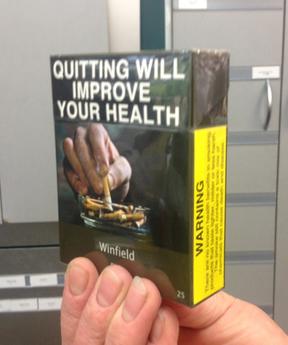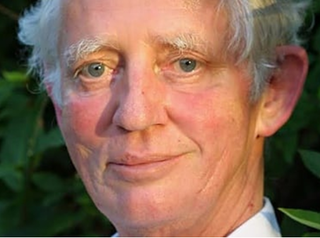Awards and honours
He was knighted in 1996 and was appointed Knight Grand Cross of the Order of the British Empire (GBE) in the 2017 New Year Honours for "services to leadership in healthcare". [25] [26]
Sir Cyril Chantler | |
|---|---|
| Born | 12 May 1939 |
| Nationality | British |
| Education | St Catharine's College, Cambridge, University of London |
| Known for | Measuring glomerular function in children, Chantler Review |
| Awards | GBE, Kt |
| Scientific career | |
| Fields | paediatric Nephrology |
| Institutions | University of California, San Francisco, Guy's Hospital, Great Ormond Street Hospital |
Sir Cyril Chantler GBE FRCP FRCPCH FMedSci (born 12 May 1939) [1] [2] is a British paediatric nephrologist. Chantler was notable for devising a method with Norman Veale of measuring glomerular function in children and later researched diet and growth failure in children with renal impairment. [3] [4] Chantler was most notable for holding an independent review of public health evidence for standardised tobacco packaging that later became known as the Chantler Review that led to standardised packaging for tobacco and cigarette packets. [5]
Chantler was educated at Wrekin College between 1952 and 1957. [6]
From 1971 to 1972, Chantler spent a year working at Institute of Child Health at Great Ormond Street, working in the department of Immunology run by John Soothill. [7] In 1972, Chantler was appointed to a position at Guy's Hospital, [7] before working for a year in the US, working with Paediatric Nephrologist Malcolm Holliday, at the University of California, San Francisco studying growth in rats with chronic renal failure, [7] before returning in 1973 to continue working at Guys under Stewart Cameron. [7]
From 1985 to 1988, Chantler was the General Manager of Guy's Hospital. [8] From 1992 to 1998, Chantler was the principal of the United Medical and Dental Schools of Guy's and St Thomas' Hospitals. [8] From 1997 to 2000, Chantler was the pro-vice chancellor of the University of London. [9] From 2001 to 2008, Chantler was Chairman of the Great Ormond Street Hospital for Sick Children. [10] Chantler was Consultant Paediatrician at Guy's Hospital from 1971 to 2000, and Fund Professor of Paediatric Nephrology at London University, 1990–2000, and emeritus since 2001.
On 28 November 2013, Chantler was asked [11] by Jane Ellison, the British Conservative Party politician, if he would be willing to review cigarette packaging and to undertake an independent review to determine whether standardised packaging would be beneficial to the public good. [12] Chantler accepted the role. Ellison wrote to him on 27 November 2013 to define the Terms of Reference. [13] On 29 November, Chantler accepted the role, with a reply to Jane Ellison, stating he did not have any conflict of interests. [14] A Terms of References method were defined to focus exclusively on the public health aspects of cigarette packet packaging and were to exclude legal issues, such as competition, trade marking, or freedom of choice. An economic investigation was also expressly forbidden. The Terms also defined the methods available to submit research. [15]
In April 2014, Chantler produced the published report. [16] In his conclusions, Chantler stated that it could not be proven conclusively that standardised cigarette packaging would reduce smoking, and that a large scale trial of such packaging would prove beneficial of such a trial would be difficult due to the number of actors, making it difficult to control. Chantler's most notable conclusion was that there was sufficient evidence to support standard packaging and tobacco control measures, that over time would return a modest reduction in the number of people smoking, particularly amongst children and young people. [17]
Chantler stated of the report, that he was persuaded that branded packaging plays an important role in encouraging young people to smoke, and that he was not convinced by the tobacco industries response that plain cigarette packages would increase smoking uptake. [18]
He was knighted in 1996 and was appointed Knight Grand Cross of the Order of the British Empire (GBE) in the 2017 New Year Honours for "services to leadership in healthcare". [25] [26]

A cigarette is a narrow cylinder containing a combustible material, typically tobacco, that is rolled into thin paper for smoking. The cigarette is ignited at one end, causing it to smolder; the resulting smoke is orally inhaled via the opposite end. Cigarette smoking is the most common method of tobacco consumption. The term cigarette, as commonly used, refers to a tobacco cigarette, but the word is sometimes used to refer to other substances, such as a cannabis cigarette or a herbal cigarette. A cigarette is distinguished from a cigar by its usually smaller size, use of processed leaf, and paper wrapping, which is typically white.
Tobacco package warning messages are warning messages that appear on the packaging of cigarettes and other tobacco products concerning their health effects. They have been implemented in an effort to enhance the public's awareness of the harmful effects of smoking. In general, warnings used in different countries try to emphasize the same messages. Warnings for some countries are listed below. Such warnings have been required in tobacco advertising for many years, with the earliest mandatory warning labels implemented in the United States in 1966. Implementing tobacco warning labels has been strongly opposed by the tobacco industry, most notably in Australia, following the implementation of plain packaging laws.

Nicotine marketing is the marketing of nicotine-containing products or use. Traditionally, the tobacco industry markets cigarette smoking, but it is increasingly marketing other products, such as electronic cigarettes and heated tobacco products. Products are marketed through social media, stealth marketing, mass media, and sponsorship. Expenditures on nicotine marketing are in the tens of billions a year; in the US alone, spending was over US$1 million per hour in 2016; in 2003, per-capita marketing spending was $290 per adult smoker, or $45 per inhabitant. Nicotine marketing is increasingly regulated; some forms of nicotine advertising are banned in many countries. The World Health Organization recommends a complete tobacco advertising ban.
Action on Smoking and Health (ASH) is the name of a number of autonomous pressure groups (charities) in the anglosphere that seek to publicize the risks associated with tobacco smoking and campaign for greater restrictions on use and on cigarette and tobacco sales.

Philip Morris International Inc. (PMI) is an American multinational tobacco company, with products sold in over 180 countries. The most recognized and best selling product of the company is Marlboro. Philip Morris International is often referred to as one of the companies comprising Big Tobacco.
Tobacco harm reduction (THR) is a public health strategy to lower the health risks to individuals and wider society associated with using tobacco products. It is an example of the concept of harm reduction, a strategy for dealing with the use of drugs. Tobacco smoking is widely acknowledged as a leading cause of illness and death, and reducing smoking is vital to public health.

An electronic cigarette (e-cigarette) or vape is a device that simulates tobacco smoking. It consists of an atomizer, a power source such as a battery, and a container such as a cartridge or tank. Instead of smoke, the user inhales vapor. As such, using an e-cigarette is often called "vaping". The atomizer is a heating element that vaporizes a liquid solution called e-liquid, which quickly cools into an aerosol of tiny droplets, vapor and air. The vapor mainly comprises propylene glycol and/or glycerin, usually with nicotine and flavoring. Its exact composition varies, and depends on several things including user behavior.
University College London Hospitals NHS Foundation Trust (UCLH) is an NHS foundation trust based in London, United Kingdom. It comprises University College Hospital, University College Hospital at Westmoreland Street, the UCH Macmillan Cancer Centre, the Royal National ENT and Eastman Dental Hospitals, the Hospital for Tropical Diseases, the National Hospital for Neurology and Neurosurgery, the Royal London Hospital for Integrated Medicine and the Royal National Throat, Nose and Ear Hospital.

Tobacco politics refers to the politics surrounding the use and distribution of tobacco.

Tobacco control is a field of international public health science, policy and practice dedicated to addressing tobacco use and thereby reducing the morbidity and mortality it causes. Since most cigarettes and cigars and hookahs contain/use tobacco, tobacco control also concerns these. E-cigarettes do not contain tobacco itself, but (often) do contain nicotine. Tobacco control is a priority area for the World Health Organization (WHO), through the Framework Convention on Tobacco Control. References to a tobacco control movement may have either positive or negative connotations, depending upon the commentator.

The UCL Great Ormond Street Institute of Child Health (ICH) is an academic department of the Faculty of Population Health Sciences of University College London (UCL) and is located in London, United Kingdom. It was founded in 1946 and together with its clinical partner Great Ormond Street Hospital (GOSH), forms the largest concentration of children's health research in Europe. In 1996 the Institute merged with University College London. Current research focusses on broad biomedical topics within child health, ranging from developmental biology, to genetics, to immunology and epidemiology.
About a quarter of adults in Turkey smoke. Smoking in Turkey is banned in government offices, workplaces, bars, restaurants, cafés, shopping malls, schools, hospitals, and all forms of public transport, including trains, taxis and ferries. Turkey's smoking ban includes provisions for violators, where anyone caught smoking in a designated smoke-free area faces a fine of 188 Turkish lira (~€9.29/$9.90/£8.22) and bar owners who fail to enforce the ban could be fined from 560 liras for a first offence up to 5,600 liras. The laws are enforced by the Ministry of Agriculture and Forestry of Turkey.

SmokinginCanada is banned in indoor public spaces, public transit facilities and workplaces, by all territories and provinces, and by the federal government. As of 2010, legislation banning smoking within each of these jurisdictions is mostly consistent, despite the separate development of legislation by each jurisdiction. Notable variations between the jurisdictions include: whether, and in what circumstances ventilated smoking rooms are permitted; whether, and up to what distance away from a building is smoking banned outside of a building; and, whether smoking is banned in private vehicles occupied by children.

Plain tobacco packaging, also known as generic, neutral, standardised or homogeneous packaging, is packaging of tobacco products, typically cigarettes, without any branding, including only the brand name in a mandated size, font and place on the pack, in addition to the health warnings and any other legally mandated information such as toxic constituents and tax-paid stamps. The appearance of all tobacco packs is standardised, including the colour of the pack.

Cigarette packets in Australia have undergone significant changes. Since 1 December 2012, all forms of branding logos, colours, and promotional texts are banned from cigarette pack designs. In turn they were replaced with drab dark brown packets and graphic images of smoking-related images to try to reduce the smoking population of Australia to 10% by 2018 from 15% in 2012.

Regulation of electronic cigarettes varies across countries and states, ranging from no regulation to banning them entirely. As of 2015, around two thirds of major nations have regulated e-cigarettes in some way. A 2023 report by the World Health Organization (WHO) found that 34 countries had banned the sale of e-cigarettes.
The scientific community in the United States and Europe are primarily concerned with the possible effect of electronic cigarette use on public health. There is concern among public health experts that e-cigarettes could renormalize smoking, weaken measures to control tobacco, and serve as a gateway for smoking among youth. The public health community is divided over whether to support e-cigarettes, because their safety and efficacy for quitting smoking is unclear. Many in the public health community acknowledge the potential for their quitting smoking and decreasing harm benefits, but there remains a concern over their long-term safety and potential for a new era of users to get addicted to nicotine and then tobacco. There is concern among tobacco control academics and advocates that prevalent universal vaping "will bring its own distinct but as yet unknown health risks in the same way tobacco smoking did, as a result of chronic exposure", among other things.

Sanjeev Bagai is an Indian pediatrician and nephrologist known for his proficiency in pediatric nephrology and neonatology. He is chairman of the Nephron Clinic in New Delhi, India. He was a visiting professor of pediatrics at Saint Justin Hospital in Canada and University of Toledo, Ohio and has taught at the University of New South Wales, Sydney.

Thomas Martin Barratt was a British paediatrician and professor of paediatric nephrology. Barratt was most notable for developing a specialist service for children with kidney diseases in Britain, bringing peritoneal dialysis, haemodialysis, and later renal transplantation to ever younger children. Barratt was an early advocate for multidisciplinary care and developed a model that was later taken up by many other specialist centres across the world. His research led to a new treatments for many types of childhood kidney diseases., and for research into childhood Nephrotic syndrome and Hemolytic-uremic syndrome.
Electronic cigarettes are marketed to smoking and non-smoking men, women, and children as being safer than cigarettes. In the 2010s, large tobacco businesses accelerated their marketing spending on vape products, similar to the strategies traditional cigarette companies used in the 1950s and 1960s.
{{cite web}}: CS1 maint: location (link)